RAF sources have indicated that they plan to create an additional front-line squadron of Typhoon aircraft according to Aviation Week and other online commentators.
The additional eighth squadron will be formed with air frames taken from the other seven. It’s understood that increased availability will allow squadrons to downsize and provide the aircraft for the eighth squadron while still allowing the same number to fly.
The government had earlier announced that the life of the jet is to be extended into 2040 and that two additional squadrons will be created, giving a total of 7 front-line squadrons.
“We will be extending the life of our multirole Typhoon for 10 extra years through to 2040, meaning we will be able to create 2 additional squadrons. This will give us a total of 7 frontline squadrons, consisting of around 12 aircraft per squadron.”
There will now be eight front-line squadrons.
It is understood that this move was made possible by the TyTAN contract, Typhoon Total Availability eNterprise service.
The contract which replaces the previously contracted Typhoon Availability Service, PC4, PC5, RDSS and Contract 1 contracts sees BAE Systems entering into a 10 year partnership with the Ministry of Defence (MOD) to transform support to the UK Typhoon fleet. According to the RAF, BAE Systems will work in partnership with the Royal Air Force and the MoD and will jointly “transform the way they work” to further reduce the costs of operating the fleet at RAF Coningsby and RAF Lossiemouth by more than a third.
The contract will enable circa £500m of savings to be re-invested into developing new capabilities for the aircraft.
According to a Royal Air Force press release, one of the major challenges the service faces is that the Tornado out of service date is currently driving the need to ensure Typhoon is fully capable of performing all the operational roles provided today by Tornado. In addition, the current operational requirements on Typhoon are further driving the need for these capability enhancements.
“Through delivery of TyTAN we will reduce the cost of the support service by circa 40 per cent, whilst maintaining and improving levels of support to the UK Typhoon fleet. Furthermore, by making significant savings we have the opportunity to re-invest in developing future capabilities for the UK Typhoon fleet.
The capability enhancements and our ability to deliver cost-effective support will make Typhoon even more competitive in the export market and improve our competitive advantage in the wider realms of fast jet aircraft support.”
The three currently unmanned squadrons are expected to stand up int he 2018-2023 period.



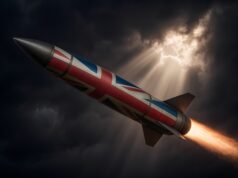
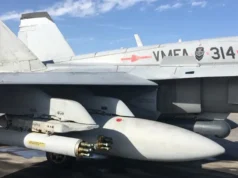

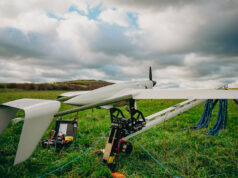
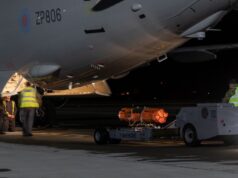
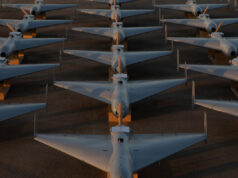
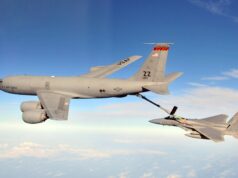
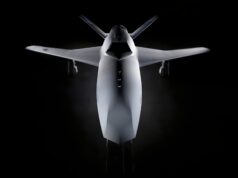

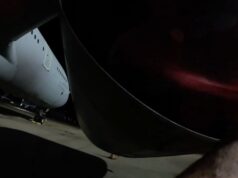

If there is no additional aircraft what is the point of forming another RAF Squadron. All it does is try to kid people into thinking we have a bigger force than we have.
Great to see an additional squadron but there’s a VERY big catch – no additional aircraft; no change in critical mass. I really, really want to see the good in this but I’m struggling…. maybe the CAS knows something we don’t and has an eye on the future but without an real increase in airframe numbers it’s hard to celebrate and the way things are going with the defence budget (ref. £785M shortfall) I’m forced to be otherwise.
When the formal announcement is made, wait for the worn out line from Michael Fallon “The UK is investing £178 billion so that our Armed Forces have the equipment they need to keep Britain safe”…… it’s getting really old now Michael.
Bang on David.
How many tornados do we have?
Only a poor civvie but this looks like kudos to BAe. Don’t know how many aircraft are needed to maintain an operationally available 12 per squadron but say its 20 with 8 in maintenance or upgrade, a total fleet of 140 for 7 squadrons. If you can accelerate maintenance and upgrade so that you only need 16 aircraft to guarantee 12 to be available then if my maths is correct you can form an additional squadron of 16, 12 available plus 4 in upgrade. So On this model BAe have halved the time an aircraft spends in upgrade…I think. They don’t get many plaudits but looks like they have dun good here.
We were supposed to have around 230/240 Typhoons, if memory serves, however we will end up with around 160 airframes now the Batch 1’s have been given a reprieve. The Tornados will go next year so until the F35B’S kick in that is all we will have. I am sorry but your question is somewhat mute; had the decisions made in SDSR 2010 reached fruition we would have had just 107 Typhoons. Given the size of our defence budget the question must be asked, ‘Where on earth is the money going?’ …….. Pontification, monopolisation, mismanagement, inaction, political ambivalence, private sector greed and a total lack of focus.
I keep reading that we are wasting our defence budget, but I don’t think when you compare our military to say France (roughly the same expenditure), that we are much different. People compare to the USN, but its clearly a poor comparison since the USN gains from the much bigger US overall expenditure and so economies of scale.
To me, the difference between US and France, is generally caused by us preferring to top end and France middle end, with the middle end gear much easier to export and so it brings down the cost, way more than just the cut in performance indicates. For example look at the type45 story, we pulled out of the european plan because we wanted something that was more powerful, but then there was no export market for it.
Steve, I would agree to a point, we have historically, since WW2, attempted and to a large degree sustained a level of capability similar to the USA but reduced significantly in scale. The French are, all things considered, on a par with the UK but as you suggest aim for the middle road; not entirely true. France does not, in key areas, rely on outside support. It maintains a fully functional Nuclear development and delivery capability, we depend on the USA for the missiles; we have no other means – all other methods previously cut. France maintains multiple delivery systems.
France operates the only true strike carrier in Europe, including Russia, the QE Class although much larger are nothing more than LHA’s that are to be compromised further to LPH status, fitted with the most basic defence/offensive systems [Sitting Duck]; typical cost saving that also affects our Type 45’s [gen. up on modern Destroyer capability, it is disturbing how weak ours are!]. Furthermore the strike fighter F35B, which will be operated from the QE Class will number just 4 front line squadrons, limited in payload and range these squadrons will have to be spread between the RAF and RN; RAF to operate a very low number of Typhoon squadrons.
Our Amphibious capability has been effectively destroyed, HMS Ocean [[LPH] gone next year, 1 of 2 Albion Class LPD at extended readiness [Mothballed], 1 RFA LSD[A] sold to the Aussies and the remaining 3 used as mine hunter motherships in the Gulf and anti piracy patrols because we lack Destroyer/Frigate critical mass.
In the meantime we are building the most expensive OPV’s ever built, utterly pointless, to replace ships we do not need because the MoD and BAE could not get there act together. Meanwhile our Frigates have applied for OAP bus passes and our only Forward Repair Ship has gone to the knackers yard.
Steve, this is not about powerful this is about mind bending incompetence that leaves our country undefended and our limited military personnel a task which, regardless of will, they simply can not meet.
Whilst this is true, the choice to buy US nukes instead of build own, was taken years back when we almost bankrupt the country trying to maintain being a world leading power. The nukes don’t come from the core budget, so we can ignore them in the comparison.
Amphibious wise, we exceed the French, especially when you include the RFA fleet. Yes their carrier is slightly better than ours, but we will have 2 compared to their 1 and it seems on paper the f35b’s far exceed the Rafales.
The whole OPV situation is a mess, but it is caused by us top ending the other vessels and having no export order to keep the ship yards open. Hopefully the light frigate design will be better placed for export and we won’t need to do this again.
I don’t get what is wrong with the type45’s, they are some of the best air defense platforms in the world. Ok they lack in the ship-to-ship warfare front, but so do pretty much all other nations currently, including the US.
Then there is surveillance platforms, drones and heavy lift aircraft, all of which we far exceed the french.
It is hard to say which is stronger overall, although i suspect standing numbers of soldiers probably means the French win in a realistic situation.
Steve we still maintain and are dragging back capability most nations would be envious of however the gaps are significant and not rebuilt over night; 10+ years when lost. New gaps are appearing and placed on the ‘to do list’ +10 year time frame.
We have lost critical mass across all services and all areas and although technological advances can help to address this problem it is not an answer in itself.
Please read again my last post, it is important to be positive [respect] however my comments are extremely accurate, we are in dire straits, wasting valuable resources and lack focus/direction; because other nations are in a worse state is not a constructive argument to our predicament.
Planning for a future War 10+ years into the future when you think you might be ready is fine unless someone messes with your timetable; given we live in the information age and whilst trying not to state the obvious, Sorry, your sugar coated view in regard to the strength of our defence will not likely be shared by those who would do us harm. Most things are transparent and our weaknesses will be exploited by potential adversaries.
Amphibious wise we are screwed, on paper we are superior to the French in reality they kick our arse. The only offensive capability the Type 45 has is its dated main gun and Merlin helicopter which also acts as its only ASW defence, better hope it remains serviceable!
You are certainly correct when it comes to surveillance we are superior to the French [apart from the little matter of Maritime Patrol Aircraft [MPA]] so at least we will have prior warning of an attack; not that we will be able to do much about it.
Hi Steve. Mike is correct in his assessment- we are in a perilous state. Indeed, the nuclear deterrent IS now part of the core defense budget and accounts for 8% of defence spending. That little ‘gift’ was dropped in during SDSR 2010 by Mr. Osborne under the radar as the nuclear deterrent used to be funded separately by the Treasury. So even less money is available than you might think.
Whilst the three arms of the services are in dire straits as Mike put it, my main concern is for the RN. I simply don’t understand the thinking behind British procurement; 1bn destroyers that are simply woefully under armed, 6bn spent on carriers that are the only carriers in the world WITHOUT their own point defence missiles, replacement frigates that are years late, extortionately expensive even though they will use many of the same weapons and sensors off the type 23s they replace! Then there are the OPVs which the RN doesn’t want, are vastly overpriced and woefully under armed…. sound familiar??
If it came to a full on shooting war…… well, Britannia would rule anymore and it really pains me to say that….
The money is going on keeping a bloated and under-worked officer corps and whatever is left goes to Bae.
David, the RN is my chief concern also for one undeniable reason ‘Trade’ and the reliance we have on it for our survival. I have read many conflicting arguments as to how the UK should approach defence and the structure of our armed forces. I decided, for what it’s worth, that that the UK should no longer try and track the USA in all services but return to a primary Navy construct where the army and RAF supply supporting roles. This I am sure would be unpopular but, hell, I am an ex-squaddie so if I reached this conclusion there might be merit!
The problem is we are so reliant now on trade, unlike in ww2 era when we could in theory survive without imported food. If a real war broke out involving multiple nations, not even the US would have a baby bit enough to protect its trade routes, the world is too big. Thinking of the navy as a protector of the trade routes is a little out dated in my opinion.
Instead of building some pathetic expeditionary force our defense doctrine should be focused on the following in order of priority,
1/ Defence of UK. We need a dedicated SAM//ABM network ( land based Aster ) and land based anti ship weapons. Utilize Zephyr and more predator drones for ocean surveillance and undersea drones.
2/ Offensive: More Astutes and destroyers rammed with cruise would give us the ability to shut down any enemy ports. Combine this with GCHQ cyber attacks and we should be able to quell any country from doing anything stupid other than Russia or China.
3/Offensive wise integrate with US forces. Zero need for carriers , more destroyers and Astutes would have been a better choice.
The reality is that no nation spends enough on its defence until the shooting starts. In a major war scenario, especially one that actually presents a threat to the UK, defence spending goes through the roof and things tend to happen very quickly indeed. At least that’s an historical view. The problem today is that weapon systems are complex and it takes time to train people to use them effectively, for example how long does it take to train a person to fly a Typhoon or F35 ? You could, at a pinch learn, to fly a spitfire in a week. WW1 pilots could be sent out with only a few hours fight time under their belts. If we don’t have the airframes, then we should ensure that we have enough aircrew trained to cover losses. Ill bet we could build a fighter quicker than we could ever train someone to use it during a major war. War materials output wont be the issue, training time across all services will be the bigger problem.
We simply don’t have enough wealth as a nation to have high materials inventory and high crew inventory. The focus should surely be on the one that takes longest to create in a war scenario. We should be buying the most advanced systems we can get, even if that excludes an export market. A large tech gap makes a big difference to the final outcome of a battle.
HMG must figure out what our role in the world is to be. Right now, it wants to be a player on the world stage but isn’t willing to fund the armed forces anywhere near adequately enough so to do. They either don’t realise or won’t accept (and I fear the latter) that said stage is a big-boy’s-club and you must pay-to-play to stay.
Secondly and assuming HMG wants to play on the world stage, it must be realised that it takes years to put capabilities in place – ref. the loss of MPA after the disaster that was SDSR 2010 and which will not now be reconstituted until 2019 – at the earliest – with the planned arrival of P8. Procurement of new aircraft like Typhoon can take 2-4yrs. Ships from drawing board to water can take 7-8yrs (ref new carriers) and a new tank design will again take years to enter service.
Having decided our role in the world and having adequate pieces already in place allows us the resources to fight to win when the shooting starts. HMG owes it to the country and our finest young men and women in uniform to properly staff, equip and fund our armed forces to do the job asked from them.
My question is how many total aircraft Typhoon type was in service? Yes, it true without additional air frame extending the squadron is totally a bad ideas! It will just weakening an individual squadron with small number of aircraft!